What It Cost Eight Women Writers To Make It In New York
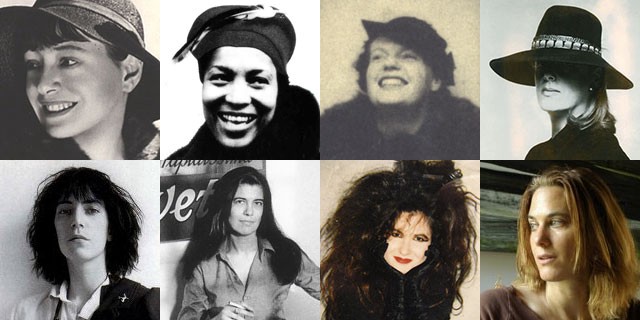
Top row: Dorothy Parker, Zora Neale Hurston, Shirley Jackson, Gael Greene.
Bottom row: Patti Smith, Susan Sontag, Tama Janowitz, Kate Christensen.
In 1967, Patti Smith wrote in Just Kids, she was considering a move to New York City. “I had enough money for a one-way ticket. I planned to hit all the bookstores in the city. This seemed ideal work to me.” Twenty-seven years before her, in 1940, Shirley Jackson and her soon-to-be husband Stanley Hyman graduated from Syracuse and moved to New York. According to this biography, “For quite some time they had known exactly what they were going to do: move to New York City, live as cheaply as possible, take menial jobs if necessary and wait for the Big Break. Not just wait — push for it.”
And fifteen years before that: “The first week of January 1925, Zora Neale Hurston moved to New York City, as she recalled, with a dollar and fifty cents in her purse, ‘no job, no friends, and a lot of hope,’” as one of her biographers put it.
The equivalent young female writer arriving in New York in search of literary success in 2012 (as calculated by the CPI Inflation Calculator) would have $19.51 in her purse, which could buy breakfast at Balthazar, or a pack of smokes and one Happy Hour cocktail, or about ten hours’ rent.
We’ve looked at how much the costs of things like Reeses peanut butter cups and TV sets have changed over time — very specific items. Let’s cast a wider net. For more than a century, the young flock to New York as the place to launch a career in the arts. Is it as expensive a proposition now as it always has been? Has the size of the potential rewards increased or decreased? And more importantly, just what was it like? In what ways was hanging at the Algonquin Roundtable just like (and not like) bumming around the lobby of the Chelsea Hotel? Let’s look at the Bohemian set over time, as seen through the eyes (and pocketbooks) of some of the women writers we’ve been reading for decades, from Dorothy Parker and Hurston onward to today.
The list of authors discussed here isn’t meant to be exhaustive, or even authoritative. There are many, many writers that could have been included in this survey, and any such omission is not intended as a slight (except to Ayn Rand, of course). Also different biographies are less forthcoming than others when it comes to specific dollar amounts, which was sometimes a factor in choosing subjects. Our intent here was simply to pick a writer or two from enough different eras to give a sense of what’s been involved in moving to the Big Apple to make it (or otherwise) over the past century.
THE RENT
The first concern of the new arrival is housing. Not to put too fine a point on it, but a young artist without a roof over the head will eventually be typing in the rain. And while couch-surfing (or whatever it was called before there was surfing) is attractive as a short-term solution, that’s a scenario whose charm wears quickly.
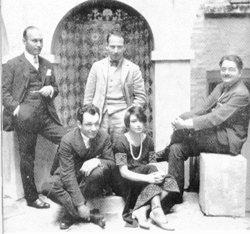
Dorothy Parker was not only the original New York scene denizen, she’s the most indelible. The Patron Saint of Getting Off the Good One, Dorothy was technically a New Yorker from the get-go, although she was born in the Rothschild summer residence in New Jersey in 1893. And the scene that she ran in was the famous Algonquin Round Table set, a group of New York’s allegedly best and brightest that congregated around a giant cornerless table in the restaurant of the Algonquin Hotel on West 44th Street (reopening in May!). These journalists, poets and playwrights included Alexander Woollcott, George Kaufman and Dorothy’s pal Robert Benchley. From here, that constitutes an Ur-Scene, the one that all the others compare themselves to — witty, talented, incestuous and inseparable, a whole greater than the sum of the parts. And (reluctantly) standing at the prow was Dorothy Parker, whose tenure at the Round Table seemed more a vocation than a lunchtime habit.
For details of Mrs. Parker’s life, we turn to Marion Meade’s bio, Dorothy Parker: What Fresh Hell Is This?
In 1927, separated from her Mr., Dorothy Parker got her own place, a furnished small one-bedroom on E. 54th Street in midtown. Both her office and locus for nightly pre-carousing cocktails, Parker paid $75 a month rent — $981.31 in 2012 dollars. If you see a Midtown one-bedroom for less than a thousand dollars I suggest you take it.
Of course living quarters should not go unadorned. In 1933, Parker attended an art exhibition for Zelda Fitzgerald. Parker was friends with F. Scott and his wife, and by that time Zelda was beginning the process of her crack-up (to be followed by Scott’s). At the show, Parker picked up two of Zelda’s oils for a total of $35. And while Parker thought them of quality, she also found them too disturbing to hang — perhaps no surprise, as of the many things that Dorothy Parker was, champion nester was not one of them. According to Meade, “So phobic was her reaction to domesticity that she would rather have starved before boiling herself an egg.” Were you to do the equivalent favor to a friend’s artist wife in rehab today, you would plunk down $612.94.
Around the same time, Zora Neale Hurston came to town. (For info on Hurston, we consulted Wrapped in Rainbows: The Life of Zora Neale Hurston by Valerie Boyd.) After a peripatetic early adulthood, bouncing between Florida and Tennessee, Hurston had shaved ten years off her age (from 26 to 16) in order to attend public school in Baltimore in 1917, eventually attending Howard University. But Opportunity, the journal of the National Urban League, had published Hurston’s short story “Drenched In Light” the previous month, so she packed up and made for the Big City. Little mention is made of the exact rents paid by Hurston (although there is, in classic writerly tradition, frequent reference to her being late on it), but it’s interesting to note a practice common to Harlem in the 20s and 30s: rent parties. For admission of pocket change, a fine party was thrown, with the proceeds going towards paying that month’s rent. Hurston herself, at about the same time Parker moved to E. 54th Street, threw a furniture party while moving into her new flat in the W. 60’s, with each attendee bringing one item of furniture. Just as Dorothy Parker’s apartment would become the treehouse for her coterie, Hurston’s flat would go on to be the equivalent locus of the Harlem Renaissance.
Shirley Jackson’s tenancy in New York was a brief one (according to the biography by Judy Oppenheimer, Private Demons), from 1940 to 1945. She and husband Stanley first landed at 215 West 13th Street, a short block between Seventh Avenue South and Greenwich, which was lined with the sturdy apartment buildings we call “pre-wars.” After a brief foray to a wooded cabin for the purposes of the quiet pursuit of writing in ’41, they returned to the city, with apartments in Woodside, Queens, and then back to the Village, on Grove Street. And as with Parker and Hurston before her, the Grove Street apartment became somewhat of a hub of frequent social occasion once Hyman’s (and later Jackson’s own) work began to appear regularly in The New Yorker, with new friends such as Joseph Mitchell, A.J. Liebling, Brendan Gill, even William Shawn. Oppenheimer describes these parties as, “never dull. Stanley was exuberant and argumentative, and both he and Shirley could be bitingly critical — it was a rare evening in which at least one person was not mortally offended.” Props to that. In 1945 they decamped for good, when Stanley was hired by Bennington College.
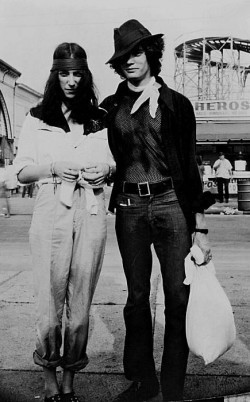
The first apartment that Patti Smith, poet, artist and member of the Rock and Roll Hall of Fame, and photographer Robert Mapplethorpe rented (when they were Just Kids, in 1967), an apartment that they saved money up for while relying on the kindness of friends for shelter, was 160 Hall Street in Brooklyn, not far from Pratt Institute, for $80 a month. They entertained friends there, much like Parker, Huston and Jackson before them, and Smith referred to these soirees as “loser’s salons.” Now, that rent would be $545. Let’s just say that Fort Greene is a little more pricey now. (Though to be fair, the property was most recently appraised at $646,000, which is an attractive price for a three-unit building.)
By 1969 Smith and Mapplethorpe had moved to a room in the iconic Chelsea Hotel on West 23rd Street in Manhattan, where Dylan Thomas lived before them and Sid and Nancy after them, and where artists from Mark Twain to Jackson Pollock to Vladimir Nabokov would stay on visits. The room ran $55 a week. The next year, they moved down the street into the second floor above Oasis Bar, which they partitioned into two spaces to accommodate their growing separate lives, for a rent of $225 a month. That was the last quarters they would share, though they remained lifelong friends (until Mapplethorpe’s death in 1989). Converted into current dollars, the rents would be $341 a week and $1,320 a month, respectively.
From the memoir of Sigrid Nunez, Sempre Susan, we get a window into the life of Susan Sontag, the Dark Lady of American Letters, in New York in 1976. Now, it may not be fair to characterize Sontag as a struggling artist in 1976 — she was already a public figure/intellectual for the past decade, had already famously visited Hanoi — but let’s remember that being a public figure/intellectual is not always as remunerative as one would think. Sontag’s apartment at the time was on the corner of Riverside and 106th Street, a two-bedroom penthouse on a block lined with more of those pre-wars, not far from the Columbia campus. Rent was reportedly $475, or $1,914.96 converted, which may seen like not so much the bargain, but if you’ve never seen a prewar two-bedroom penthouse apartment, think “mansion.”

More recently, Kate Christensen — PEN/Faulkner winner for The Great Man, and, most recently, author of The Astral — very helpfully posted a short bit (and, even more helpfully, was nice enough to answer a few questions via email) detailing the Rents That She Has Known, bouncing around NYC post-college. (If you’re not familiar with Brooklyn, you may want to skip over the street references here, but during that time I lived blocks away from Christensen so I’m fascinated.) In 1989, she rented a bedroom of an apartment on St. Marks Place between 3rd and 4th Avenues for $300 — of which apartment Christensen says, “Our windows had bullet holes in them; my roommate was mugged twice in front of the bodega on the corner; my boyfriend was afraid to visit me.” Nostalgia! In 1990, her one-bedroom on Graham off Metropolitan (currently Second-Wave Williamsburg nexus) was $350. In 1995, her place on N. Henry and Norman, the far reaches of Greenpoint, was $450. In 1996, she moved into her new husband’s industrial loft near Metro and Wythe, which went for $700. Respectively, those rents adjust to $550.80, $609.66, $672.23 and $1,015.70. And Christensen even provides her own current example, as, when she left Brooklyn in 2010, her railroad apartment near Monitor and Norman Streets was $1,800. Lesson learned: man, did we have it good in the 90s.
FOOD AND DRINK
The acquisition and consumption of the daily bread is an occupation for us all, of course, but for the recently arrived, it takes on a special light. These are basic needs, of course, but they are ancillary to Making It. Who has time to worry over the meat and the potatoes when the search for status looms, and when surrounded by such interesting friends? Not so much an afterthought, but something that happens in the back of the mind, frequently on the way to somewhere else.
Amidst the wisecracks and the bon mots hurtling back and forth, the room that held the Round Table was a restaurant, providing sustenance to the well-heeled clientele (and the Round Tablers). While Dorothy was more likely to rely on the charity of the hotel, happy to have a famous/notorious regular, the blue-plate special (half of a spring chicken, two veggies and French fries), was going for $1.65 in 1927, the height of the Round Table’s fame. Convert that into 2012 dollars and you get $21.59. True, the Algonquin would occasionally stand the bill, as the publicity brought by the celebrity of the Round Tablers was worth it, the Algonquin was decidedly not a diner.
Maybe the offhanded concern for a day’s worth of calories was due to their fondness for liquid refreshment. The Round Tablers, were pretty much souses to a man (or woman), and that was during Prohibition. And at that time, the Tablers weren’t exactly scouring the city for the cheapest Happy Hour. The bootleg Scotch that Dorothy’s first husband would pick up to keep the couple lubricated in 1922 was going for $12 a quart (a princely $162.62 in current dollars).

With Susan Sontag, again we suffer from the lack of a direct reference to price, but from Nunez’s Sempre Susan we have this tidbit on Sontag’s opinion of the formal dinner party, which brings to mind the entertaining of Parker, Hurston and Jackson:
It was sometime in the sixties, after she’d become a Farrar, Straus and Giroux author, and she was invited to a dinner party at the Strauses’ Upper East Side town house. Back then, it was the custom chez Straus for the guests to separate after dinner, the men repairing to one room, the women to another. For a moment Susan was puzzled. Then it hit her. Without a word to the hostess, she stalked off to join the men.
Naturally the meals of Gael Greene are more of a pronounced element in the story of Gael Greene’s life, as related in her autobiography Insatiable: Tales From a Life of Delicious Excess. She writes of a life of nascent gourmandism, growing up in Michigan in the 40’s, accentuated by a mid-college year in France with a one-month detour to Rome, where she learned how to feed any number of friends with a lamb risotto that she could whip together for a buck or two.
Even as her star as a magazine writer and restaurant reviewer began to rise, in the heady days of the ascension of New York magazine, Greene keeps an eye on the bottom line. In 1969 Greene wrote a feature called “The Menu Rap and How To Beat It,” a service-y little bit advising New Yorkers on how to downsize it up while styling and profiling at the more prohibitive of New York’s restaurants. For example, a meal for two she names “Four Seasons in Your Slack Season,” (from the Four Seasons, naturally) a chicken liver mousse to share, two quails en brochette and a pot of coffee come to $14.25, or $88.40 now. Not so slack, no?
In Insatiable, Greene mentions the price of a bottle of Chablis she and her first husband, journalist Don Forst, drank in 1962 while planning their belated honeymoon as $1.89, intended to demonstrate the modesty of her and Don’s pre-fame lifestyle. Was that in fact a Two Buck Chuck? At $14.25 in 2012 dollars, no it was not.
In 1967, Patti Smith, newly in New York and living in the streets, finds two quarters in the grass of a park, which paid for breakfast for her and her new friend/scout, Saint (who borders on the archetype of the Magical Homeless Person, but, hey, it happened). “Fifty cents was real money in 1967,” writes Smith. Fifty cents then is $3.41 now. Not what we would call real money — bagel with a schmear maybe, and hopefully with a free coffee regular? And two years later, she scraped together change and went to the Automat for a lettuce and cheese sandwich. She thought it would cost 55 cents, but the price had increased by a dime, so she was short. A gallant Allen Ginsberg, then a stranger to Smith, paid the difference and they ate together. The adjusted cost of the sandwich over which Smith was mistaken for an attractive young man? $4.03.
CLOTHES
Clothes are not a prominent element of many of the life stories we looked at, and happily so, as that’s not a stereotype we are excited to perpetuate. Wrapped in Rainbows does mention that in 1926, while Zora Neale Huston was at Barnard, admission to the Junior Prom ran $12.50, which we include as that is at least partially an apparel-related event. That converts into an even $162 now — prohibitive if you are pinching the pennies.
Gael Greene does mention being fashion-minded as a new New Yorker in 1957, reading “WWD religiously so [she] could decide which Yves Saint Laurent or Givenchy designs to look for when authorized $69.95 copies arrived at Ohrbach’s, the late, lamented discount temple on Thirty-fourth Street.” Haute couture knock-offs may be an arguable necessity for the new arrival, but the modern equivalent of that price tag is $566.73. (Yikes.)
A piece of jewelry was the MacGuffin of the secret origin of the friendship between Patti Smith and Mapplethorpe. In 1967 they met under random circumstance three times, the third time being the charm. The second time, Mapplethorpe came into Brentano’s, where a homeless Smith worked (and sometimes slept, hiding as they locked up the store). Mapplethorpe bought a Persian necklace that Smith had had her eye on. The necklace cost $18. The third time they met, Mapplethorpe gave it to Smith. This extravagant gesture would cost $122.69 now.
In 1973, Smith made a pilgrimage to the Ardennes of France to visit the birthplace of Arthur Rimbaud. To prepare for the voyage on the Bowery she purchased what she imagined as her wardrobe for the trip: “an unconstructed raincoat of Kelly green rubberized silk, a Dior blouse of gray houndstooth linen, brown trousers, and an oatmeal cardigan,” a previously-enjoyed ensemble that set her back $30, or $153.83 adjusted.
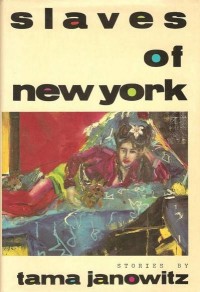
You’ve heard of novelist Tama Janowitz, of course. Amidst the books she has written (including the iconic Slaves of New York) is a collection of essays, Area Code 212: New York Days, New York Nights, which is rich in detail useful to this project. From the collection, we learn that when Janowitz was finishing college, she was developing the trademark style for which she was equally notorious as Slaves took off, buying (among other vintage curiosities) a black Balenciaga ball gown for just $2.50 at the Ladies’ Auxiliary thrift store in Flushing, Queens. She graduated Barnard with her B.A. in 1977, so we’ll call it 1975 when she bought the Balenciaga, which would cost $10.58 were it now. At that price, buy them all.
And Kate Christensen, while living at her St. Marks pad with the broken windows in 1989, got a pair of black Bandolino pumps for $80, to wear at her first Big City job. The job, however, was in publishing (“I didn’t realize everyone in publishing wore sneakers to work,” said Christensen), so she only wore them twice. Adjusted, that was a $146.88 investment in a future that did not come.
LIFE INCIDENTALS
Into each of these lives a little rain must fall. In between the exhilarating times there are the down-days, the accidents and the setbacks, minor and major.
Take, for example, Dorothy Parker. None of our lives are without their ups and downs, invited and not, but Parker’s downs were numerous and frequent. Given to both depression and a sharp case of dipsomania, Parker attempted suicide on more than one occasion. After one such attempt in 1926, she kept regular appointments with Dr. Alvan Barach (who would later go on to help develop the oxygen tent) as an attempt, which failed, at rehabilitation. Each hour-long appointment cost $25 (when Parker bothered to pay), which translates into the pricey $325.23 in current dollars.
A year later Parker found herself attracted to a political cause (shocking the Round Tablers, as Parker was not one known to have a political bent). Ferdinando Sacco and Bartolomeo Vanzetti were facing trial for a double murder and robbery that had happened seven years earlier. As there was very rabid anti-anarchist sentiment at the time (this would be the first Red Scare), supporters of the movement claimed that Sacco and Vanzetti were railroaded. The trial in Boston was heavily protested, and Parker was one of the celebrities (along with Edna St. Vincent Millay, Upton Sinclair and Katherine Anne Porter) who came to town to march in support of them. She was arrested on one of her first marches, and fined five dollars for “loitering and sauntering.” I’m not sure if the sauntering law is still on the books, but the fine converts to a present-day $65.42 — roughly a mild NYC parking ticket.
It did not end well for Sacco and Vanzetti, and that was not the last Red Scare that Dorothy Parker got caught up in, as her commitment to social causes and general left-leaning landed her on the Blacklist of the second Red Scare in the 50s. Her commitment survived her passing in 1967, as she bequeathed her estate to the NAACP.
When Patti Smith was making the big move, hoping for a life as a bookseller, she actually found that she did not have enough money for the one-way ticket. But she found a purse, underneath a public phone, that had not only a bus ticket in it, but also thirty-two dollars, which she described as “almost a week’s paycheck at my last job.” That ’67 $32 would be $218.12 now (obviously, this does not count as a calamity for Smith, but think of the poor lady in Philly who lost her purse).
Can a dollar amount be placed on affairs of the heart? Not so much, but it’s worth a mention in the spirit of intrepidness. Some of our subjects ended up in long-term relationships that lasted for decades — Shirley Jackson, for one, remained married to Stanley Hyman until her death in 1965. On the other hand, take Zora Neale Hurston, who was twice married, the first time for four years and the second for seven months. And of course in the early years for our subjects there is the requisite amount of Hooking Up. Dorothy Parker was said to have had affairs with the bulk of the Round Table; Patti Smith was linked to Mapplethorpe and Sam Shepard (before marrying Fred “Sonic” Smith in 1980 and remaining so until his death in 1994). And the dalliances of Gael Greene you might have heard of, as they included Clint Eastwood and Burt Reynolds (each the subject of magazine features Greene was assigned). Greene, you may remember, also gained a certain notoriety for publishing very forward erotic novels in the 70s (Blue Skies, No Candy and Doctor Love).
Though sometimes the unintended consequence of the roll in the hay carries a price tag, real or emotional. Before Smith left New Jersey for New York, she found herself unexpectedly in a motherly way at age 20, a baby she gave up for adoption. And Parker’s relationship with playwright Charles MacArthur in 1922 (before her marriage to Mr. Parker had ended, by the by) resulted in an abortion (about which Parker quipped that it served her right for putting all her eggs in one bastard). It was rumored that MacArthur kicked in thirty dollars for the procedure, which would be $406.54 now.
THE DAY JOB
Eventually the young arriviste turns her eye to getting paid. All the apartments, the meals, the hooch, the Balenciagas — they don’t pay for themselves. Hence, the day job and the general hustle for scratch, all in hopes of that first check for something the artist actually came to New York to do in the first place.
It’s difficult to separate the pre- and post-success life for Dorothy Parker, as her first sale predates her employment, and her employment was tied in pretty tightly with her writing. But shortly after she sold her first poem in 1914, Parker was hired on the staff of Vogue, the sister magazine of Vanity Fair for $10 (or $225.41, adjusted) a week. She continued to contribute to VF, and began to be assigned feature writing in 1917. Months later she was transferred full-time to VF, where she would meet Robert Benchley in 1919, when he was hired as managing editor for a salary of a hundred dollars a week (or $1,325.97 now).
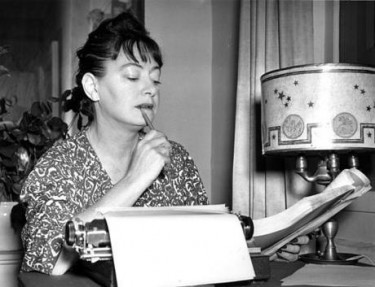
Sometimes deductible expenses were incurred. In 1920, Dorothy had been let go from Vanity Fair (to make way for the return of P.G. Wodehouse, whom she’d replaced), and Benchley, Mapplethorpe to Parker’s Patti Smith, joined her by resigning in protest. In pursuit of freelance work, the two decided to rent their own office, a very modest closet-sized space in the Metropolitan Opera House studios. (“An inch smaller and it would have been adultery,” said Parker, an adultery which no matter how widely talked about was deemed unfounded by Parker’s biographer, Marion Meade.) The rent? Thirty dollars per month, which works out to be $341.49, which seems to be about what a desk in a workspace might cost now in Brooklyn Heights, or maybe in the Fashion District.
In the case of Zora Neale Hurston, her early life was a little hand-to-mouth. Born in Florida and raised in the Jim Crow South, one of her earliest recorded jobs was as maid to the lead singer of a traveling Gilbert & Sullivan troupe in 1915, for ten dollars a week plus room and board. Now that would be $225.41. Later, after initial success while in New York proper, she found that the writer’s paycheck was not sufficient to make ends meet. She was then staked by her benefactress, philanthropist Charlotte Mason, who, both born and married into wealth and obsessed with “primitive” spirituality following the death of her husband decades before, was “Godmother” to many in the Harlem Renaissance. In 1928 Mason hired Hurston as a researcher, to travel throughout the South collecting African-American folklore, for the salary of $200 a month, which converts to $2,662.73 now.
Shirley Jackson, in the 40s, suffered many a menial job. Jackson, mocking her own c.v., wrote, “I am twenty-three, just out of college, authority on all books and great writer, can type, cook, play a rather emotional game of chess, and have a republican father, which is no fault of mine.” One of these jobs was a brief stint selling books at Macy’s (bookselling being a recurring theme here). One of husband Stanley Hyman’s first jobs is also a matter of record — in 1940 entered and won a New Republic contest, which magazine then offered him a job (which he took) as editorial assistant at $20 a week (which works out to be $327.30 in 2012 dollars).
According to this New York feature, Nora Ephron, arriving fresh from Wellesley in 1962 on her way to a full-time reporting gig for the New York Post (and eventual long career in the motion-picture business) was first a mail-room girl at Newsweek, for the weekly salary of $55. Were that Wellesley girl making the current equivalent after making the move from Massachusetts, she could expect $414.62 a week, a little more than ten bucks an hour for a forty-hour week.
Gael Greene, in her autobiography, describes her reaction to being asked to write for Clay Felker’s new magazine, New York. Greene was already a successful freelancer, with bylines in big ticket mags like Ladies’ Home Journal and Cosmopolitan, and was concerned about the size of her Felker paycheck. “The word was that everyone at New York, star writers and unknowns alike, would be paid the same puny three hundred dollars an article till the magazine began to make money,” Greene writes. This was 1968, so that puny $300 would be a puny $1,954 now.
Meanwhile, that same year Patti Smith landed her second bookstore job, at Scribners, and the salary of $65 a week made her the breadwinner of 160 Hall, while Mapplethorpe made art. That works out to be $428.46 now. (For purposes of illustration, a forty-hour week at the current federal minimum wage would net $290.)
And the publishing job for which Kate Christensen bought the pumps? That was as an editorial assistant at William Morrow (a nice place to start, yes?), for a 1989 salary of $17,500, which would be $32,129 now.
MAKING IT
Hopefully the day that comes after the dingy apartment, cadging meals and punching the clock is the day that first check arrives, compensation for the first byline, or the first story. And even more hopefully, that day is only the first of a long march of such days.
The first piece that Dorothy Parker ever sold, a nine-stanza poem called “Any Porch,” was bought by then-new magazine Vanity Fair in 1914 for twelve dollars. Remember, that was a time in which poems were more widely published (as in, by more than just The New Yorker). In fact, Parker’s celebrity (and she was no doubt one, in the 20s and 30s) was built more on her verse than on her prose. (Yes, you may be sick of hearing, “Men seldom make passes/At girls who wear glasses,” cited as representative of Parker’s talent, as well you should.) Nevertheless, that first sale converts to $273.20 in current dollars, or thirty bucks a stanza.
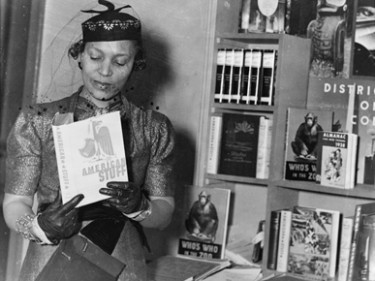
In 1925, soon after arriving to the city at 34 (which should reassure you late-bloomers), Zora Neale Hurston won more prizes than anyone else (more than Countee Cullen, more than Langston Hughes) in Opportunity’s first literary contest — two second prizes and two honorable mentions, one each in short story and drama. Each of the second prizes brought an award of $35, or $455.33, adjusted. Hurston’s first novel, Jonah’s Gourd Vine, was published in 1931, for which she received an advance of $200, or converted, $2,995.57. (How is it that the same $200 is worth more in 1931 than in 1928? The Great Depression, which was a time of monetary deflation.)
In 1941, while on austere retreat in New Hampshire with her husband, Shirley Jackson sold her first piece, a short comedic piece titled “My Life With R.H. Macy” to the New Republic. It was an apt recount of her experiences while selling books at Macy’s, and it brought with it a fee of $25 (or $390.12 in 2012 dollars). I’m not sure, however, how much that is translated into New Hampshire dollars. “The Lottery” (which is the most harrowing thing you read in high school) was first published in the New Yorker in June 1948, and her first novel, The Road Through The Wall was published later that year for an advance of $500, or $4,759.17 adjusted.
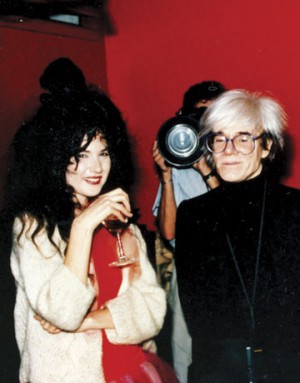
According to Area Code 212, in 1986 Tama Janowitz (who had partly supported herself with fellowships and prizes post-college) obtained with the help of her agent an advance of $3,500 for Slaves of New York, the novel that would put her on the map (and into the largely manufactured “Brat Pack” along with Jay McInerney and Bret Easton Ellis). That converts into $7,270 now. Her next two books were pre-sold (at the same time as Slaves for $20,000 apiece, or $41,544, which seems more like it, but when you take out the taxes and the agent’s commission, not so much. Especially if it takes more than a year (or two) to write the novel, that’s not exactly enough to rush out and buy yourself health insurance.
Kate Christensen’s first story was published as the winner of a Mademoiselle fiction contest in 1988, which brought her an award of $1,000, which would be $1,924.24, now (“It saved my life,” Christensen wrote to me in an email). And a year later she placed her first piece in Seventeen, a 100-word assignment on architect Maya Lin, for a dollar a word. That converts into $183.60 in 2012 dollars. I did not ask her about her book contracts, as it seemed tacky.
SCRAPING BY
In an essay reminiscence of the New York City art world in the early 80s, from her Area Code 212 collection, Janowitz writes, “I was in my twenties and felt embittered that I had missed the Real Thing — the Real Scene — by more than a decade.” Maybe that’s a strange argument for Janowitz to make, considering how Slaves of New York transformed wherever she was once hanging out into the Real Scene, at least in retrospect. (For example, the next piece in the book details the Blind Date Club, which consisted of Andy Warhol taking Janowitz and Paige Powell out on a weekly dinner with various and random blind dates — if Warhol is not the Real Scene, then who is?) But is that the appeal of moving to the big city? Is the goal success, or is the goal the richness of experience that happens in the pursuit of that? It may be a career decision, but it’s certainly also a lifestyle choice, and I will do the favor of not referencing a certain Sunday television show pertinent to this discussion. And is that why the influx of young writers to Gotham continues to this day? I think it’s safe to say, looking over the data, that while bargains can be had (I’ve had them too!), living in NYC is and has been an expensive proposition, and while a tenable standard of living has historically been obtained, as demonstrated by our subjects, Making It is one of the harder things in the world (and that’s before we even begin to talk about things like talent).
Writing about her early time as a writer, Janowitz ends a reckoning of how little money she made compared to what she’d have made with a more cut-and-dry career observing, “As for advice, I only offer this: Mamas, don’t let your daughters grow up to be writers.” Apologies to Willie Nelson, but if it’s piles of cash that the young writer is imagining that await in moving for the bright literary lights of New York, that’s sage. But maybe everything else, the Real Thing-ness, makes up for it. It’s hard to avoid having to scrape by, seemingly at any age, and maybe one’s own Algonquin Round Table is more than a small comfort.
Related: How Much More Do Books Cost Today?
